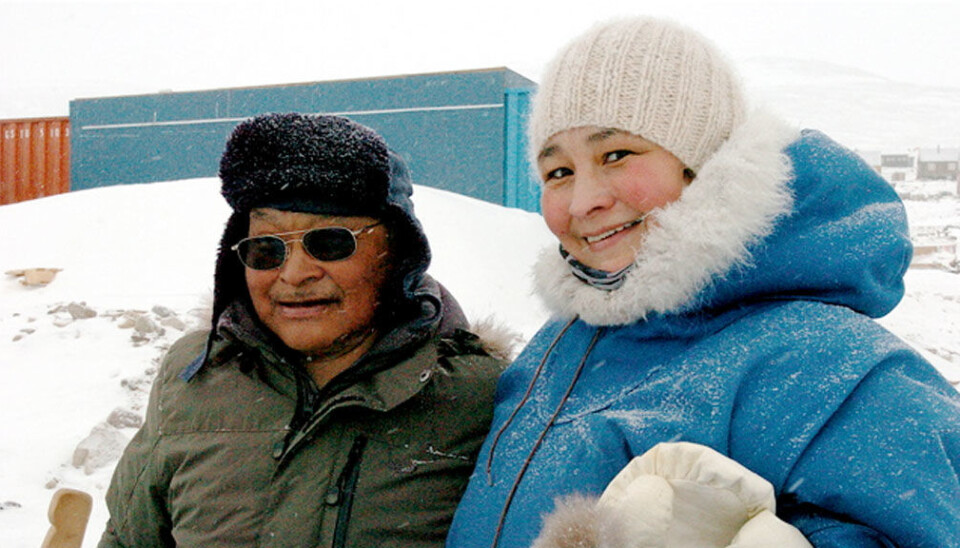
Q&A: What is it like to be a scientist in Greenland?
GREENLAND: She speaks six languages, married a fisherman, and encourages foreign scientists to respect the Greenlandic people. Meet Lene Kielsen Holm who left her euro-centric school and went home to Greenland to study Inuit culture.
Born in Qaqortoq on the southern tip of Greenland, Lene Kielsen Holm studied at the Institute for Culture and History at Ilisimatusarfik (The University of Greenland) in the capital city of Nuuk. She now works for the Greenland Institute of National Resources, where she studies the indigenous Inuit’s perspective and experience of climate and environmental change.
SN: Please introduce yourself.
LKH: My name is Lene Kielsen Holm. I was born in Qaqortoq, in 1963--before Greenland had home rule so I schooled in Denmark between 1981 and 1984. I moved back to Greenland and studied Greenlandic Culture and History at Ilisimatusarfik.
My early education was very euro-centric, I never learned about my own culture then. For example, I didn’t know we had 5 species of seals before I studied these things myself because we didn’t learn this at school. So I went to the university to learn more about my own culture and history. Now I study the Inuit culture in Canada, Alaska, and here in Greenland.
SN: Have you always worked in Greenland?
LKH: Yes. I’ve always worked here, but I’ve travelled a lot. Before I worked at the GINR, I worked eight years at the Inuit Circumpolar Council. I travelled a lot to places where the Arctic Council members were working or had meetings, and I’ve been in all eight Arctic countries. I’ve also worked with other indigenous organisations within the council--from Canada, Alaska, and Russia.
SN: Have you always been a scientist?
LKH: No. Before I began to study at Ilisimatusarfik I was a traffic officer with Air Greenland for five years. Perhaps this was where my interest in native peoples began as I travelled a lot. But, then I married a fisherman in Nuuk and I also learnt a lot about natural resources and how people made a living out of it, here in Nuuk. I took a lot of inspiration from my husband and his family.
SN: How many languages do you speak?
LKH: I’m from south Greenland, so I speak our dialect. I also speak Danish, English, French, and the other Scandinavian languages. You have to learn other languages here, otherwise the rest of the world is a closed entity. In east Greenland and northernmost Greenland, they also have very distinct dialects. I can understand them more and more as I travel around the country.
SN: Is this what you wanted to be when you were growing up?
LKH: I think so. When I was small, I wanted to be the leader of the kindergarten and at school I wanted to be the best [she laughs]. When I was studying at Ilisimatusarfik I took a year in Canada, in Quebec, and I learnt a lot about Inuit studies over there. The anthropologist professors there spoke the Inuit language, and when they do field work, they go for a year to get a good connection with the local people. I saw that if you wanted to do social science in Canada you have to be connected to the people--much more than we are here in Greenland.
SN: Describe your typical day as a scientist in Greenland?
LKH: It changes everyday. When we’re travelling in north Greenland for example, we interview people, and ask them to write down their observations or experiences for us to document their knowledge. Their dialect is very distinct, so when I'm reading the things that they’re writing I can get stuck in a black hole, not understanding one particular word--this can take some time.
The past two months I’ve been involved in a large project to translate a book, “The Meaning of Ice” into Greenlandic. It’s also being translated into local languages in Canada and Alaska.
SN: What has been your favourite research project or discovery?
LKH: To learn how insightful my own people are about the environment, the living resources that we have, and the climate.
SN: Would you encourage other scientists to come and work in Greenland?
LKH: We have a lot of them, and of course they are very welcome, and we in Greenland also want to be part of the global community. But one thing I would ask them before they come here -- maybe even before they do the research, is to stay here in a local community and talk to people and learn what our needs are. For many years the science and research that has been done here is to the benefit of researchers and scientists and not so much to the Greenlandic people. Foreign scientists are welcome, but they should keep a respect for Greenlandic people in their minds.
SN: What are you doing when you are not busy at work?
LKH: I have a son and a daughter and two granddaughters, so I spend a lot of time with them. And when the weather is not as bad as it is today, we would be outside and enjoying nature--especially at this time of year when the plants are coming out. I like to teach my granddaughter about the different plants in Nuuk and go down to the beach to see the sea life. Spending time outside is the best.
SN: Where do you see yourself in ten years time?
LKH: I hope that I will be working at the Ilisimatusarfik, to pass on my knowledge about these issues [involving native peoples in scientific research] to students so that my kind of work will continue in the future.




